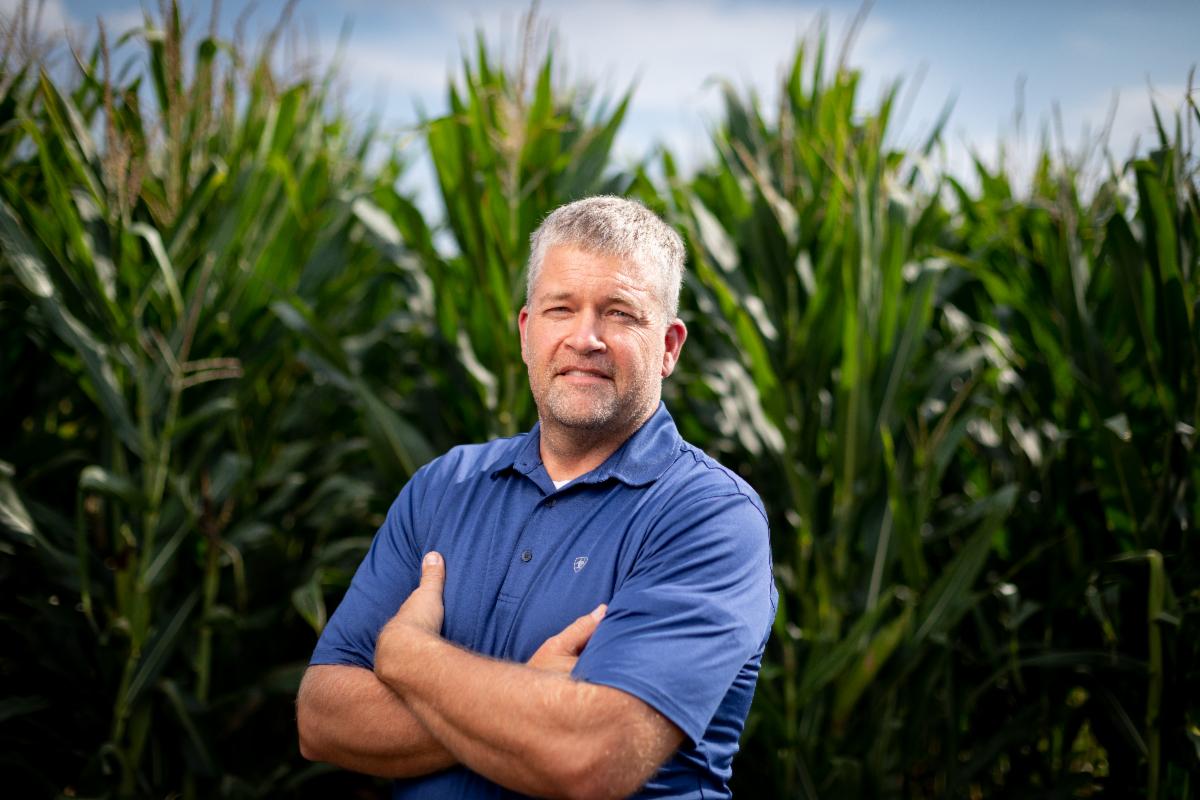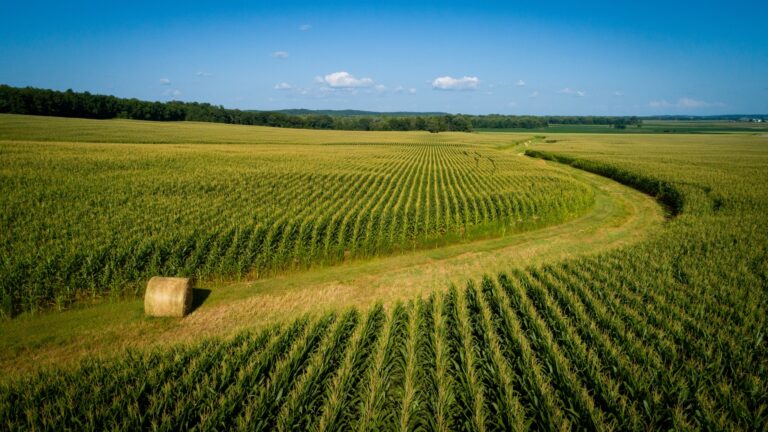2023 December Stewardship Advocate
NATIONAL COLLABORATION AIMS TO CATALYZE COVER CROP ADOPTION, IOWA TAKES CENTER STAGE
In a united front, three Iowa ag partners are leading a statewide effort to increase the adoption of cover crops, an erosion-prevention and water quality practice, as part of a national program called Farmers for Soil Health.
The Iowa Corn Promotion Board (ICPB), Iowa Soybean Association (ISA) and the Iowa Agriculture Water Alliance (IAWA) are collaborating to offer up to $50 per acre split into payments over three years to farmers who enroll in the program and plant cover crops. This is possible through a grant from the National Fish and Wildlife Foundation.
“We know farmers take their jobs as stewards of the land seriously. They don’t want to lose valuable nutrients from their fields. We’re confident that more information about cover crop management is going to lead more farmers to plant them because the benefits to soil health and water quality have been realized by many Iowa farmers,” said Greg Wandrey, Director of Sustainability at Iowa Corn.
“We’re grateful for the opportunity to share the benefits of cover crops with more Iowa farmers. We have a great team of Conservation Agronomists who are going to be meeting with farmers one-on-one to help them not only plant cover crops – but be successful at it,” said Roger Wolf, Director Conservation for the Iowa Soybean Association, which is leading technical assistance.
In 2022, Iowa farmers planted nearly 3.8 million acres of cover crops, more than double the amount in 2017. The nationwide goal for this project is 30 million acres of cover crops by 2030.
“This is a fantastic opportunity to show the other 20 states in the Farmers for Soil Health initiative that Iowa is a leader in on-farm conservation. We’re making tremendous progress in water quality practices like cover crops. At the same time, we have a long way to go, but working together we can do it,” said Sean McMahon, Executive Director of IAWA, a nonprofit aimed at improving water quality through farmer-led efforts.
Cover crops can also improve soil structure, build organic matter and reduce costs in other areas of a farming operation such as weed control.
Cover crops have immense value long term, but they can be tricky to get started. Cost share offered by this project will help reduce any initial risk.
Key cost share details:
- Cost share is open for cover crop acres seeded this fall/winter. Enrollment is open through February 29, 2024.
- Payment for new cover crop acres is up to $50 over three years. There is a $2/acre incentive for continued cover crop acres.
- Cost share can stack with most programs except for USDA programs. ISA Conservation Agronomists can help you figure out how to maximize available incentives.
To contact an Iowa Soybean Association Conservation Agronomist:
- Mike Gilman: Team Lead mgilman@iasoybeans.com | 515-577-5600
- Ben Porepp: bporepp@iasoybeans.com | 515-802-2264
- Evan Brehm: ebrehm@iasoybeans.com | 319-310-5468
- Ryan Johnson: rjohnson@iasoybeans.com | 712-229-7184
- Joe Wuebker: jwuebker@iasoybeans.com | 712-790-1415 C
Latest News
10 Tips for Selecting Crop Insurance
NRCS Obligates Record $85.8 Million in Conservation Funding to Iowa Farmers
Secretary Naig Announces Expansion, New Phase for Northwest Iowa Water Quality Project
5 Tips To Achieve The Best Fertilizer Spread Pattern
Faith, Responsibility Motivate Longtime Iowa No-Tiller
NRCS Announces ACEP, AMA, CSP, EQIP, RCPP for 2024 Funding, Apply by January 19th, 2024
Soil Health Institute Launches Slakes: A Free Smartphone App to Measure Soil Aggregate Stability
Nutrient Runoff Reduction Into Mississippi Basin Ahead of Schedule
FARMER TO FARMER: MIKE VER STEEG

Mike Ver Steeg farms south of Inwood, in Lyon County in the very northwest corner of Iowa. Legacy and family are extremely important to Mike as he farms with his dad Eugene, son Cody and second cousin. He says, “I take great pride in our operation and consider it a privilege to farm with my family. My dad taught me when I was just starting to farm and I am passing on my knowledge and experience to Cody as we work together in raising a crop and in our hog operation.”
He grew up on the farm, attended Iowa State University and majored in Agricultural Studies and minored in Agronomy, and has been farming since.
Economic and environmental sustainability are the backbone of the Ver Steeg farming operation. Mike says, “In order to build our soil health and improve water quality, we strip-till corn in fields with swine manure and no-till corn where manure is not applied. We plant rye cover crops ahead of soybeans into corn stubble and no-till plant them into standing rye to get the maximum benefit from the cover crop. We are also experimenting with planting winter peas, oats and winter camelina into soybean stubble ahead of the 2024 corn crop.”
Mike uses variable rate technology to plant his corn between 32,000 and 39,000 seeds per acre. They plant a range of hybrids from 94 to 109-day relative maturity. According to Mike, “We plant a lot of early corn to start harvesting in the middle of September so we can start feeding new crop corn early and get our cover crops planted in a timely manner”.
In addition to their crops, the Ver Steegs keep busy with a farrow to finish hog operation. All of their corn is fed to pigs. Mike has his own feed mill and uses dried distillers grain and corn oil in swine diets. Mike says, “Swine manure is the bulk of our fertilizer. We test manure from each barn and apply enough gallons to get to 150 units over as many acres as possible. We use a nitrogen management tool to determine if more nitrogen is needed. If so, we variable rate side-dress nitrogen with Y drop applicators.”
Mike has many other irons in the fire. He owns shares in a managed sow farm and hog processing facilities in Nebraska and Iowa. He is also a board member of a farmer owned regenerative ag company.
He is also a very active member of the Iowa Corn Growers Association (ICGA) and serves as the District 1 Director. He says, “I serve on the Animal Agriculture and Environment Committee because I have a passion for animal agriculture and sustainable farming. I have also started attending U.S. Meat Export Federation meetings. I enjoy being part of Iowa Corn to understand how the membership arms work to lobby and how the Iowa Corn Promotion Board invests our checkoff dollars to wisely add value to both corn and livestock. Livestock producers in Iowa can be proud of Iowa Corn’s willingness to support their industry.”
In closing, Mike recognizes that every year is different, and he has to be adaptable to all the factors that impact his cropping decisions. “2023 was a challenging year with the shortage of precipitation. We believe our agronomic and sustainable practices make us more resilient and able to withstand the year-to-year variability that we face. We are looking at all aspects of our cropping operation and acting on what we can control, and hope Mother Nature cooperates with some timely rainfall in 2024.”
UPCOMING EVENTS:
January 8: New Webinar: Beyond Cover Crops and Tillage: How Can We Really Calculate Farm Carbon Emissions?
January 19-20: Practical Farmers of Iowa Annual Conference; Des Moines, IA
January 23: Taking Action In Conservation Invite; Cedar Rapids, IA
Multiple Days: Iowa Learning Farms Webinar
Multiple Days: Crop Advantage Series; Ames, IA
